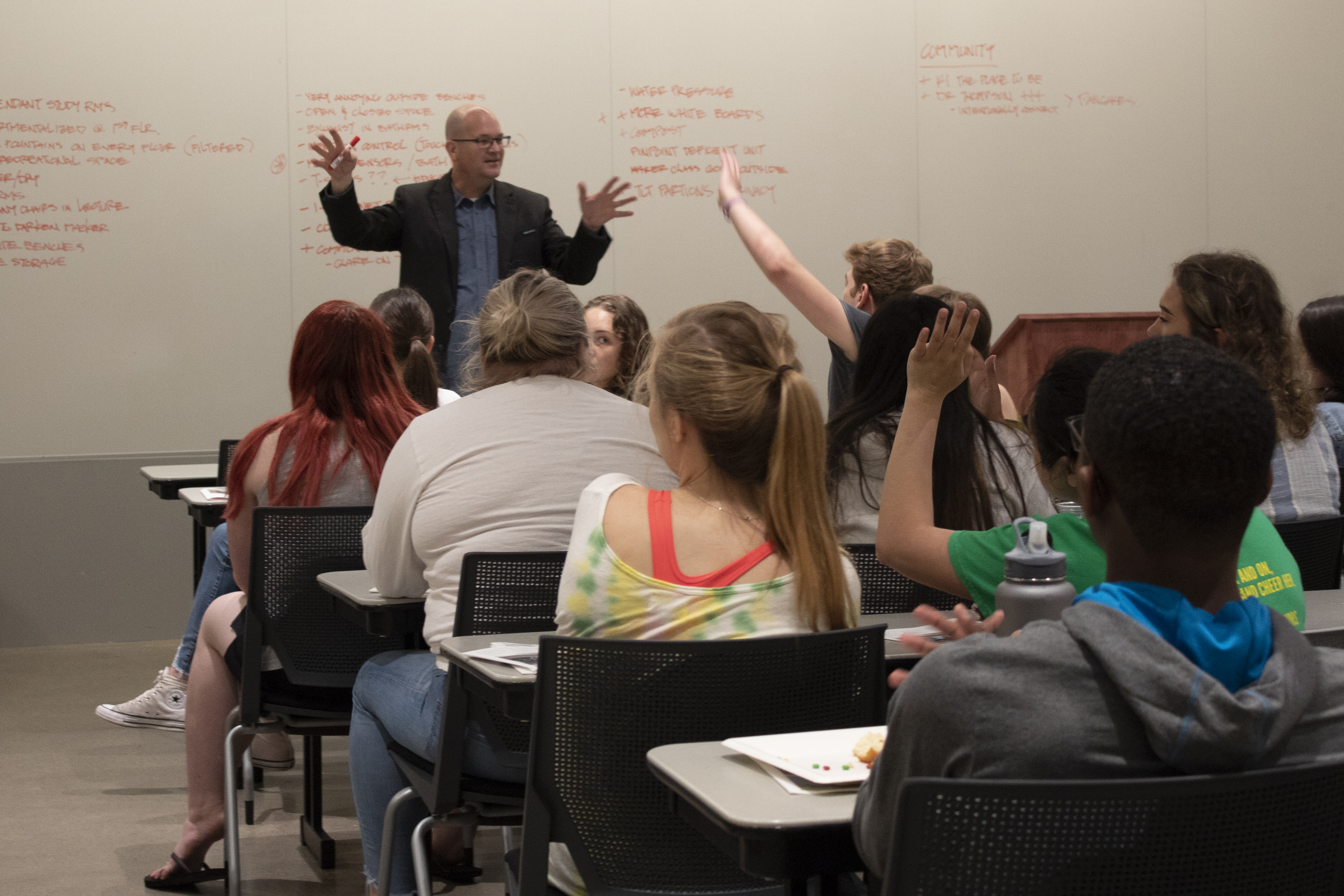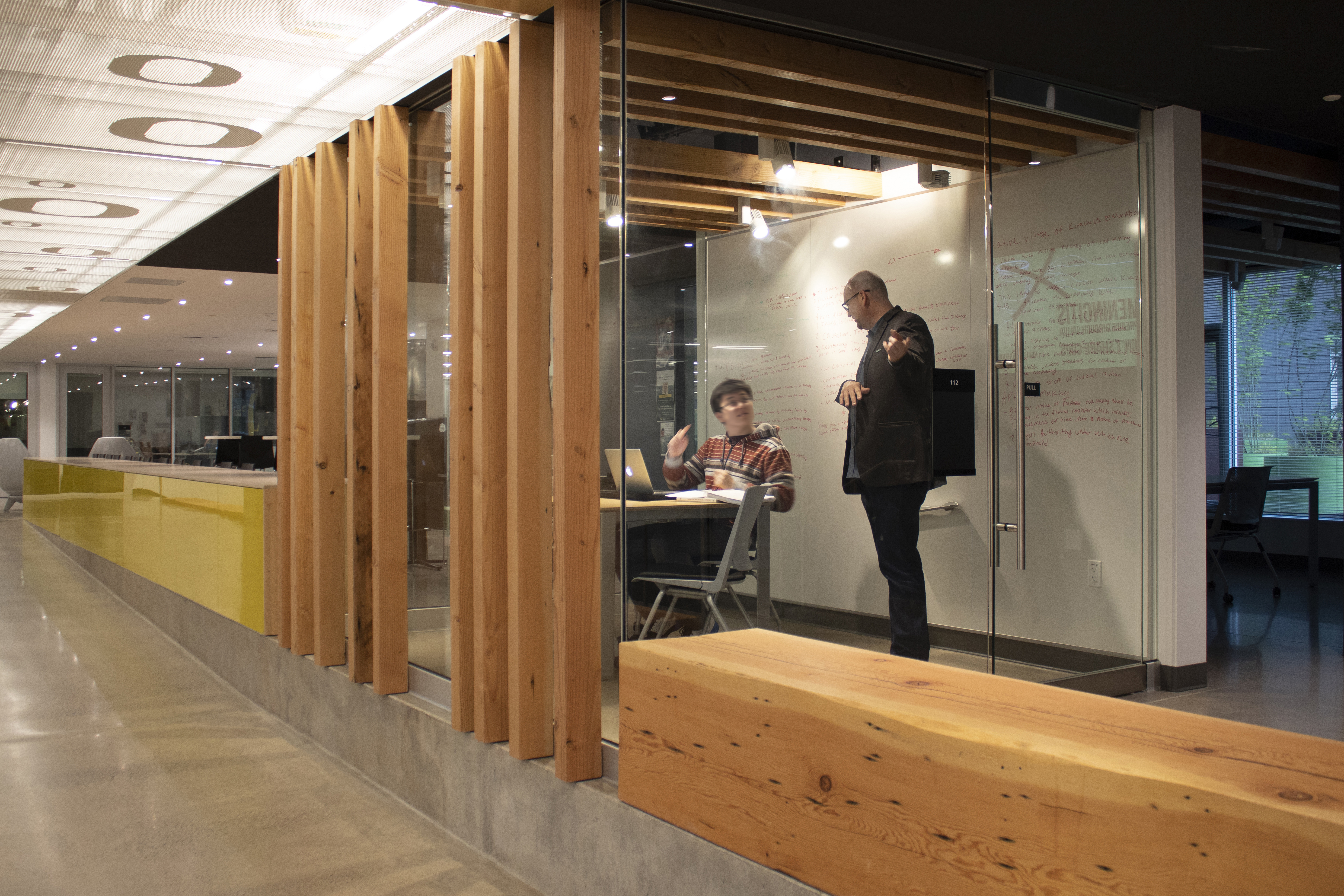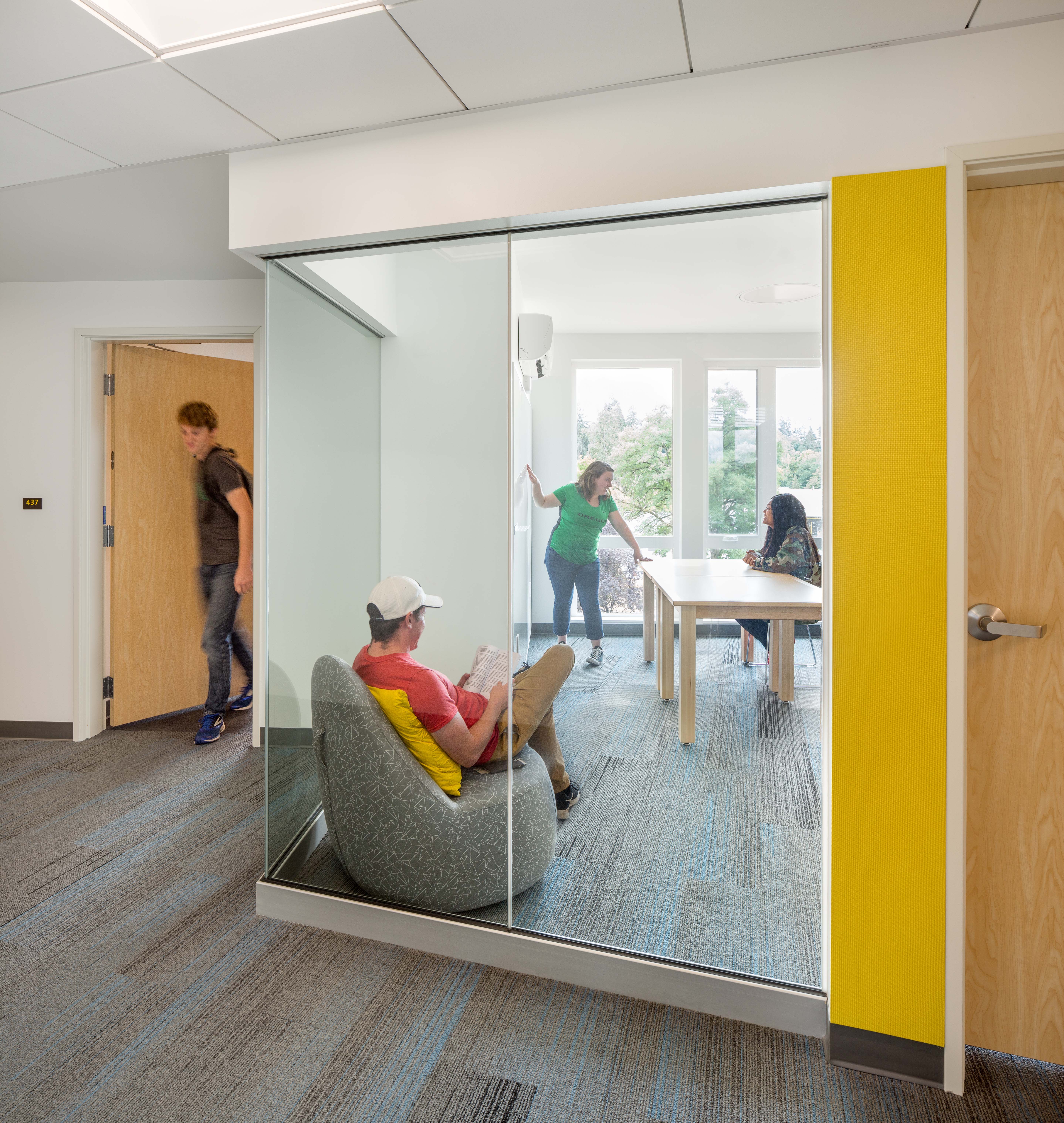by Kurt Haapala
Mahlum and the Director of Housing at the University of Oregon, Michael Griffel, hosted an “evening listening session” with the residents of UO’s newest residential community – Kalapuya Ilihi. Happily, what we heard was resounding positive feedback about living in this new space.

“I used to live in Walton Hall last year and I just love it here. It is so easy to meet new people, it is definitely the place to be,” said one student. Her sentiments seemed to be widely shared.

Direct Insights Make a Big Impact
As part of Mahlum’s commitment to enhancing the residential experience for college students, our project teams return to each living environment on a typical weeknight. Through passive observation and informal dialogue, we assess how students use the building. This qualitative Post Occupancy Evaluation (POE) has, over the years, revealed insights into how our designs can evolve to meet the needs of today’s busy students. We have discovered ways to modify community spaces to enhance flexibility, support technology in and around the residence hall, and enrich academic and social encounters to boost student advancement and personal growth. We have also observed how design decisions produce unanticipated results (both positive and negative), including building systems that have become maintenance issues.
What We Learned
Our evening at Kalapuya Ilihi revealed that the transparency and diversity of community spaces have successfully connected students. Open lounges and glass-enclosed study rooms adjacent to student rooms and community spaces promote serendipitous encounters. A sense of familial security happens when students can see (and wave at) their friends. The asymmetrical corridors with views and natural light terminate in “student nooks,” which are great informal hang out areas and create micro-cultures within each floor community. When asked, a majority of students said that they used the central open stair because it is convenient, directs them into and past the Academic Learning Commons, and reinforces the larger sense of togetherness.

Through this listening session we also learned about specific system deficiencies, like one elevator that constantly has breakdowns, and an air-conditioning unit wasn’t programmed properly. We also learned that there’s a need for more “user education” on how thermostats work and how operable exterior windows directly affect the building’s energy management system.
When asked about the gender inclusive restrooms, among the first that Mahlum has designed for a higher education facility, the entire student group gave them high praise. They also said that in general they feel fortunate to be living in the best residential facility on campus!
